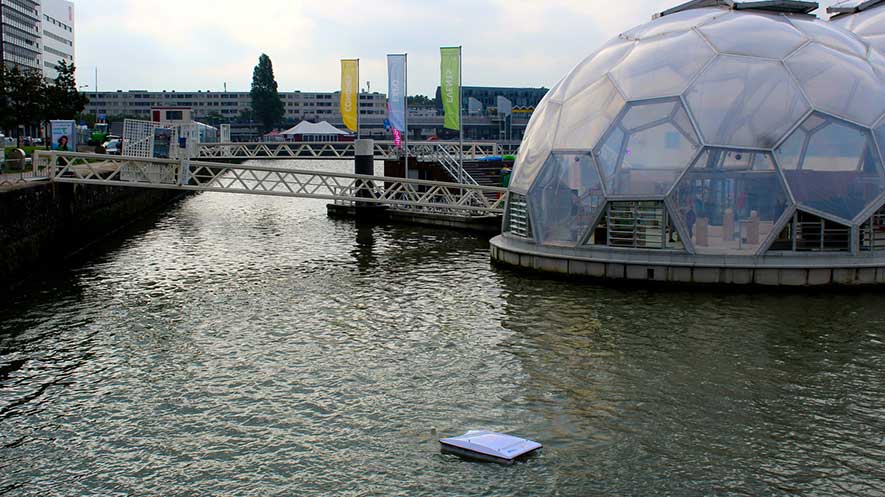It’s widely understood that the water on our planet is critical to the existence of life - our seas produce the oxygen we breathe, provide the food we eat, and absorb vast quantities of greenhouse gases. And though 95% of our ocean remains a mystery, we are certain of one thing: our oceans are in critical danger.
Even with desperate cries from the global scientific community, humankind is not acting fast enough to counter potentially irreversible issues like climate change and pollution. Limited budgets for combating these issues is not the only hurdle - simply gathering data at endangered sources can be hazardous for humans. But with advances in robotic technology come new and innovative methods for ocean research aimed at the preservation of our most precious and abundant resource.
Recently, researchers and citizen scientists have been using small Unmanned Surface Vessels (USVs) to study the earth’s water. These robotic vehicles can complete expensive and dangerous tasks previously done by humans, providing us with a better means of understanding complex and dynamic aquatic environments. Companies like Blue Robotics in California have started to make components to build these vehicles, making them more accessible than ever and allowing us as Earth-dwellers to take matters into our own hands. A number of individuals and organizations have taken advantage of that to build USVs for environmental monitoring and remediation.
This past summer Science in the Wild, an organization of researchers and citizen scientists, traveled to Nepal to study the effects of climate change on glacial lakes that are filling with water from melting glaciers faster than ever. The corresponding rise in the levels of these lakes has been disastrous for nearby communities. Science in the Wild’s Patrick Rowe designed and built a backpackable USV to survey the lakes using sonar. He and his team collected data to understand the formation, growth, depth, and composition of the lakes.
In addition to being affected by changes in the Earth’s temperature, our waters are also tremendously polluted with chemicals and trash. Students at Fort Lewis College in Durango, Colorado recently designed a network of USVs to continuously monitor the quality and quantity in the city’s water reservoir, which was accidentally contaminated in August 2015 with wastewater from a gold mine. The USVs collect data regarding the physical properties, including pH levels, temperature, and salinity to keep a constant eye on water quality.
In the Netherlands, Richard Hardiman and his team at RanMarine have developed a solar-powered USV that is capable of cleaning water surfaces with little or no human supervision. The Waste Shark scoops up debris, marine waste, and chemical substances in harbors and canals and uses sensors to communicate data regarding water quality, weather, and depth. The USVs act in unison with each other, collecting data that can be shared almost instantly. Not only does this allow for a quick response time to water quality concerns, but it also encourages public engagement through educational outreach and citizen scientist programs.
From monitoring the physical properties of reservoirs to collecting debris is harbors, USVs and other marine robotics technologies have made major strides protecting our seas. Our oceans may seem more damaged than ever, but we are also in a better position than ever to address that.
Each of these USVs was built with components from Blue Robotics. Visit us at Oceanology International North America, Booth E37 to learn more!
By: Elisa Miller, Blue Robotics





